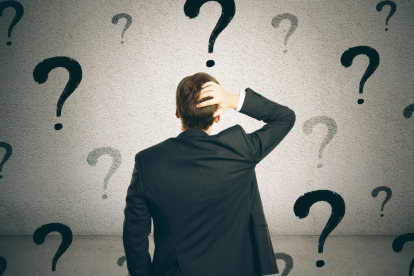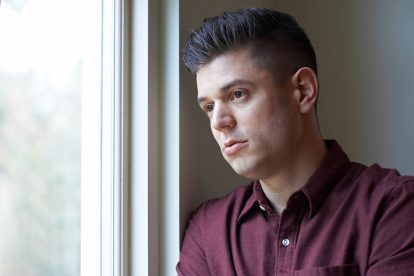
What is Bipolar Disorder?
Bipolar disorder is a severe and life-altering mental health disorder that leaves sufferers caught in a cycle of alternating depression and mania. Misdiagnosis is common, but once it has been correctly identified bipolar can be treated successfully through a combination of medication, psychotherapy, education, and complementary healing methods. Residential treatment is essential for many bipolar sufferers, since intensive, round-the-clock care may be required to get them back on the road to good health.
Bipolar Disorder Overview
It is normal to feel sad or depressed in response to unpleasant or stressful events. It is also normal to feel happy or euphoric when good things happen. Emotional reactions to real-life circumstances are a natural part of living, and nothing to be feared or avoided.
But with bipolar disorder the situation is quite different. Emotions develop independently of life events and often reach a level of intensity that can be painful and disabling. Bipolar disorder is a mental illness that can turn the lives of sufferers upside down, limiting their freedom and making it increasingly difficult to function or achieve.
Bipolar disorder produces two moderate-to-extreme moods—depression and mania. Each will be experienced at some point by the bipolar sufferer, in cycles or alternating patterns that vary somewhat from person to person. Depressive states occur more frequently than bipolar manic states, which explains why the disorder used to be called manic depression.
Most individuals with bipolar will experience periods of emotional calm, where they feel almost normal. But eventually the symptoms of bipolar depression or bipolar mania will return, and without treatment bipolar sufferers will continue to experience abrupt and powerful mood swings for the rest of their lives.
The average age of onset for bipolar disorder is 21. But early signs and symptoms frequently manifest during the teen years, even if bipolar isn’t suspected or correctly identified at the time.
Types of Bipolar Disorder
While all cases bipolar disorder share the same basic outline, there are variations. Mental health professionals have identified five distinct types of the disorder:
- Bipolar Disorder I
People with bipolar I experience acute and repeated episodes of mania and depression. In some instances they will experience mixed episodes, where depressive and manic symptoms occur simultaneously. Bipolar I is considered to be the most debilitating form of the disorder, and to be diagnosed with bipolar I an individual must experience a manic episode of seven days or longer that is severe enough to require hospitalization. - Bipolar Disorder II
With bipolar II the familiar cycling between depression and mania continues. However, with this variety of bipolar disorder only the depression is severe, while the manic states are milder and cause much less impairment. This lower-intensity form of mania is known as hypomania. - Cyclothymic Disorder
People with this type of bipolar disorder alternate between mild depression and hypomania, with short periods of normal mood in between. People with cyclothymic disorder are able to function better than other bipolar sufferers, but it is still an unpleasant condition and, like other types of mood disorder, it should be treated by mental health professionals. - Rapid Cycling Disorder
This version of bipolar disorder produces frequent and precipitous changes in mood. A person must have had at least four episodes of bipolar depression, mania, or hypomania within the previous year to be diagnosed with rapid cycling bipolar. - Bipolar Disorder, Not Otherwise Specified
Mood elevation and depression are both experienced, but not in any clear or predictable pattern. Mixed episodes of bipolar depression and bipolar mania are relatively common among those who carry this diagnosis.
Bipolar Depression: Signs and Symptoms
Bipolar disorder was at one time believed to be a variety of depression, which is why it carried the label manic depression. This is a testament to the frequency, duration, and severity of depression that most bipolar I and bipolar II sufferers experience.
The depression symptoms associated with bipolar depression are largely indistinguishable from the symptoms of conventional clinical depression. These signs of depression include:
- A significant loss of motivation
- Muted emotional responses
- An inability to experience joy, pleasure, or happiness
- Low energy and chronic fatigue
- Sleeping longer than usual or at odd hours
- Loss of or increase in appetite
- Disinterest in other people or world events
- Reclusiveness, detachment
- Feelings of hopelessness and low self-esteem
- Talk of suicide, or attempted suicide
These signs of depression are familiar to those who’ve suffered from clinical depression. But with bipolar depression they are only one side of the coin.
Bipolar Mania: Signs and Symptoms
When it first develops, bipolar mania may seem relatively benign, especially if it follows on the heels of a significant episode of depression. The manic state brings newfound energy and optimism, and that is a welcome change from the emptiness of depression.
But bipolar manic states are uncontrolled, unpredictable, and often reach levels of intensity that are highly unwelcome. An extreme bipolar episode may require emergency medical treatment.
Bipolar mania symptoms include:
- Constant feelings of euphoria and exhilaration
- Boundless energy and activity, often without any obvious purpose
- Constant anxiety and nervousness
- Rapid speech and thought
- Irrational anger and agitation
- Difficulty sleeping or relaxing
- Dangerous, impulsive behavior
- Psychosis (hallucinations, delusions)
Hypomania symptoms are less severe than the symptoms of bipolar mania, but they are still involuntary and a clear sign of mental illness.
The Challenges of Diagnosing Bipolar Disorder
Mental health professionals diagnose bipolar disorder based on its symptoms. Many bipolar sufferers make their initial visit to a general practitioner, who will then refer them to a psychiatrist if medical testing reveals no physical causes for their emotional and psychological discomfort.
For some patients an accurate diagnosis can be made quickly. However, there are complications that can make diagnosing bipolar disorder difficult.
Because bipolar depression is more frequent, long-lasting, and disabling than bipolar mania (in most cases), the majority of bipolar sufferers seek help when they’re depressed. If manic states have yet to manifest, or go unreported or unremembered, a psychiatrist may diagnose clinical depression instead of bipolar disorder, following up with treatment recommendations that are not entirely appropriate.
Co-occurring disorders are another factor that can skew a diagnosis, especially if there is a symptomatic overlap. Anxiety disorders, adult ADHD, post-traumatic stress disorder (PTSD), psychotic episodes, and substance abuse issues are just some of the mental and behavioral health conditions that can produce symptoms similar to those caused by bipolar disorder and, if they are diagnosed, bipolar may be overlooked.
Up to 70 percent of all bipolar disorder sufferers are initially misdiagnosed. To minimize the risk, physicians and mental health professionals should collect detailed, thorough life histories from anyone exhibiting symptoms consistent with a mood disorder. Patients can help reduce the possibility of misdiagnosis as well, by making an effort to report any and all symptoms of ill health they have experienced in the past, even if they seem disconnected from current emotional states.
6 Million Adults Struggle with Bipolar Disorder
Residential Treatment Can Help
Treatment and Recovery
Mood disorders will not disappear on their own, and if the symptoms of bipolar disorder are not addressed they may grow stronger and more debilitating over time. On occasion, they may create medical emergencies that require immediate hospitalization and intensive medical care and crisis stabilization.
Inpatient treatment in a qualified residential facility, followed by long-term care through an outpatient treatment plan, is highly recommended for bipolar sufferers seeking lasting wellness, especially those who also suffer from co-occurring disorders. People with less disabling forms of bipolar may not require extensive inpatient services, but there may be exceptions to that rule since no two bipolar sufferers are exactly alike.
The depressive and manic states that define bipolar disorder are each a sign of ill health. Each must be factored into the planning of a treatment regimen, and if bipolar disorder is initially misdiagnosed as clinical depression the medications used may not solve the problem. In fact, they may make the problem worse, since antidepressants used to treat depression alone can sometimes trigger a manic episode if consumed by someone with bipolar disorder.
Antidepressants are prescribed for bipolar disorder treatment, but usually in combination with other drugs that can counteract their mania-triggering effects, and even then their use must be carefully monitored.
The types of drugs used to treat bipolar disorder include:
- Mood stabilizers. As the name suggests, these drugs help prevent mood fluctuations. They are prescribed to help control bipolar manic symptoms, but are often effective against depression as well. Lithium is the most commonly prescribed mood stabilizer, but other drugs in this class used to treat bipolar disorder include valproic acid (Depakene), carbamazepine (Tegretol), divalproex sodium (Depakote), and lamotrigine (Lamictal).
- Antidepressants. While they must be used with caution, antidepressants work well for many individuals with bipolar depression. Traditional antidepressants (SSRIs, MAOIs, TCAs, etc.) are often prescribed, but a newer drug with antidepressant qualities, sold under the brand name Latuda (lurasidone HCI), is the one medication specifically approved by the FDA for the treatment of bipolar depression.
- Antipsychotics. While normally used to treat other conditions, specifically schizophrenia, antipsychotic drugs (used in combination with mood stabilizers and/or antidepressants) can also help smooth the highs and lows of bipolar disorder. The anti-psychotics frequently prescribed for bipolar sufferers include haloperidol (Haldol), loxapine (Loxitane), aripiprazole (Abilify), quetiapine (Seroquel), olanzapine (Zyprexa), and saphris (Asenapine).
- Antidepressant/antipsychotic hybrids. A medication called Symbyax, which combines the antipsychotic olanzapine with the antidepressant fluoxetine, is effective against both depressive and manic symptoms.
Medication is considered the cornerstone of bipolar treatment. There can be issues, however, when side effects are so strong bipolar sufferers choose not to continue taking their drugs. Individuals using bipolar medications should be taught how to handle these side effects during treatment, with the caveat that medications may be changed if those effects are too unpleasant or debilitating.
Another issue with medication is that bipolar sufferers may choose not to take them during manic periods, because their symptoms are not overly stressful. This is a mistake, since the mania will eventually swing back to depression and the best way to head that off is to stay consistent with medication.
For bipolar sufferers with substance use disorders, it is absolutely vital that they remain abstinent when taking antidepressants or mood stabilizers. Drugs and alcohol do not interact well with pharmaceuticals, and people taking medications for bipolar disorder are far less likely to stay on those drugs if they are also abusing intoxicants.
Overall, comprehensive recovery programs should include individual, group, and family therapy, attendance at mental health support group meetings, medication management, education and life skills classes, and complementary mind-body healing methods like meditation, acupuncture, biofeedback, equine therapy, yoga, and wilderness retreats.
Treatment often begins in a residential treatment center and continues in an aftercare format for months or years after that. If a dual diagnosis has been made, and more than one mental or behavioral health issue is present, integrated treatment services in a residential facility are vital and essential to the healing process.
In most instances bipolar disorder treatment is highly effective, and most who receive professional attention for an extended period should experience significant improvement in their bipolar symptoms and in their overall quality of life.



